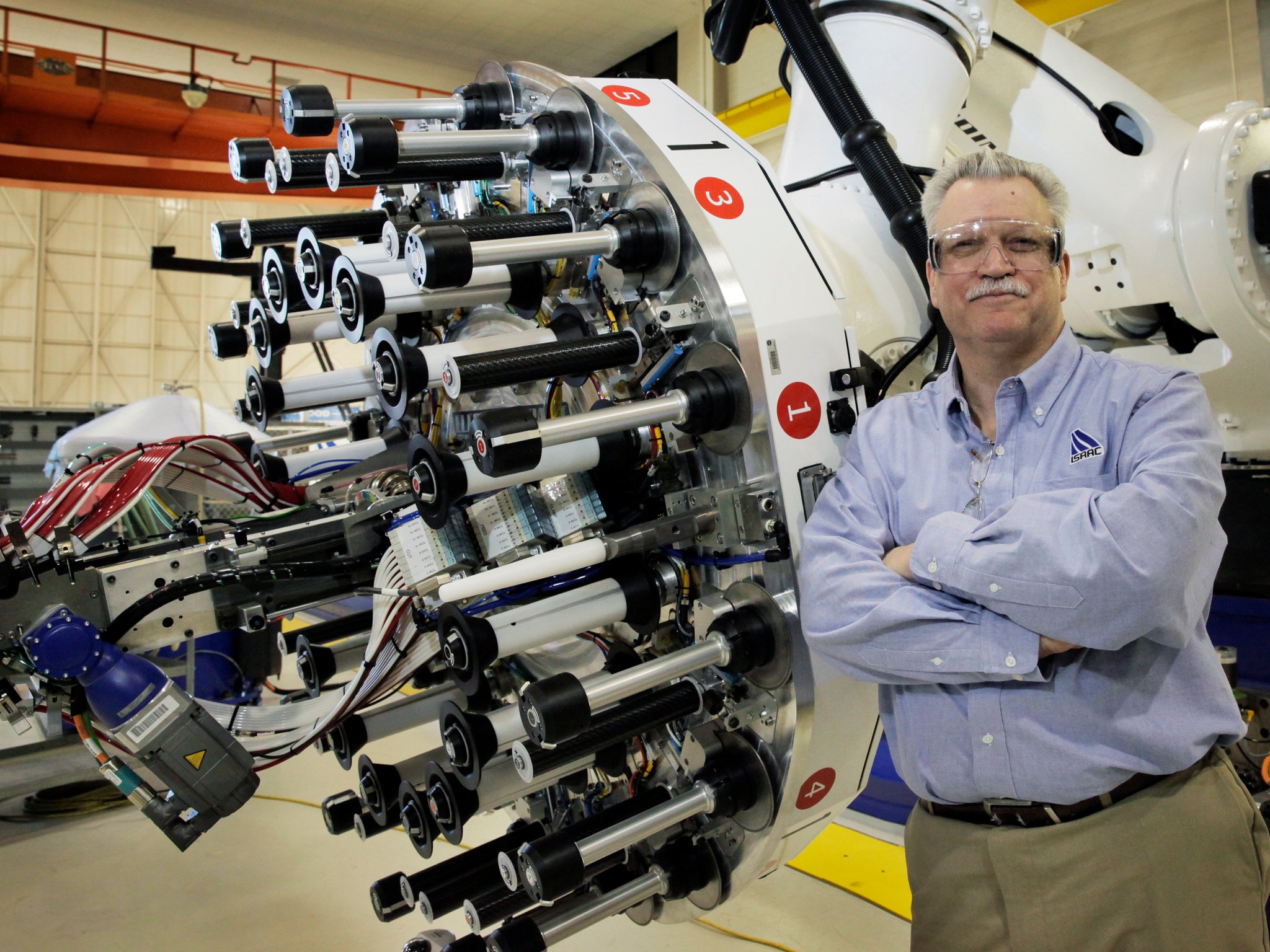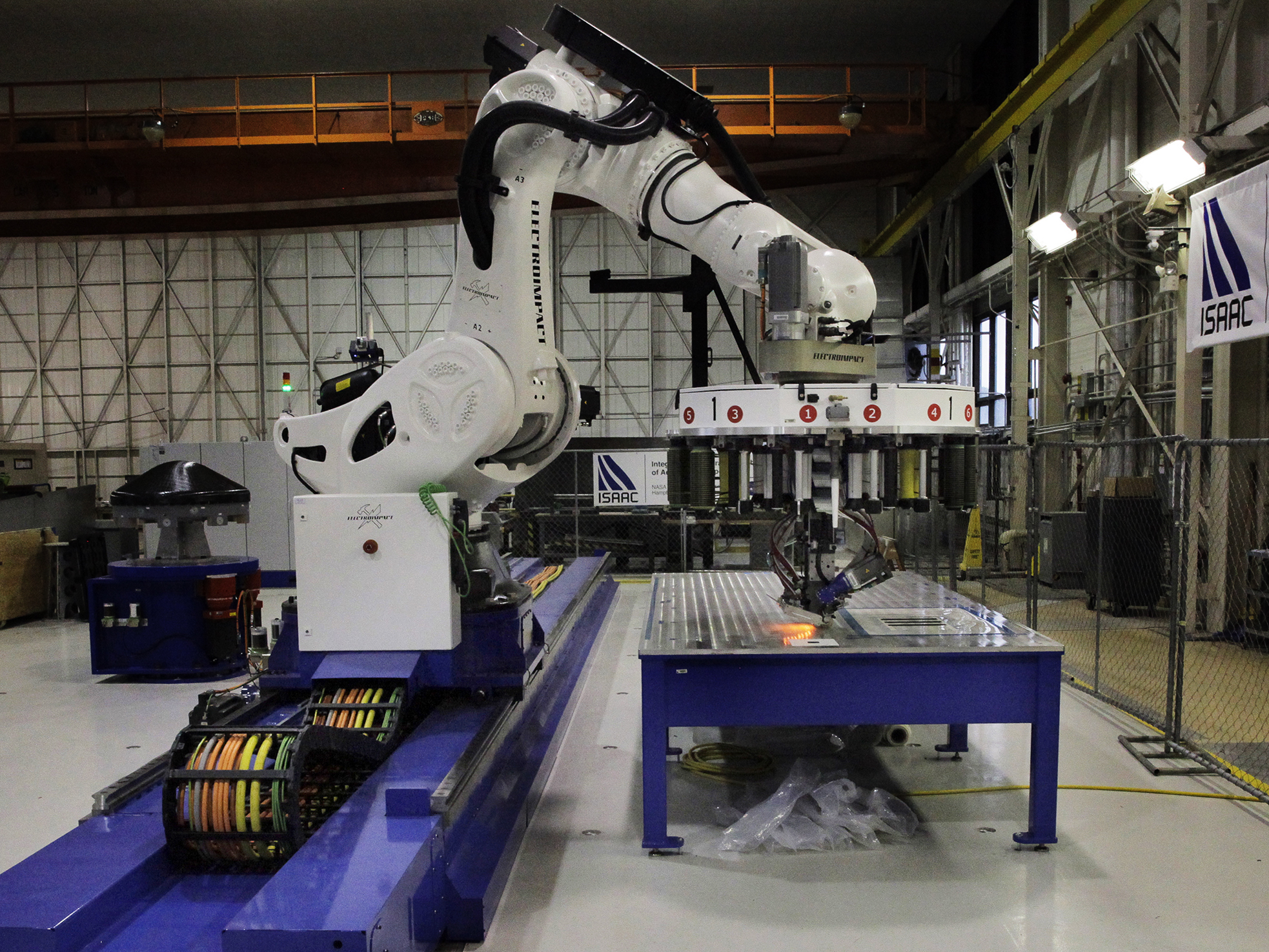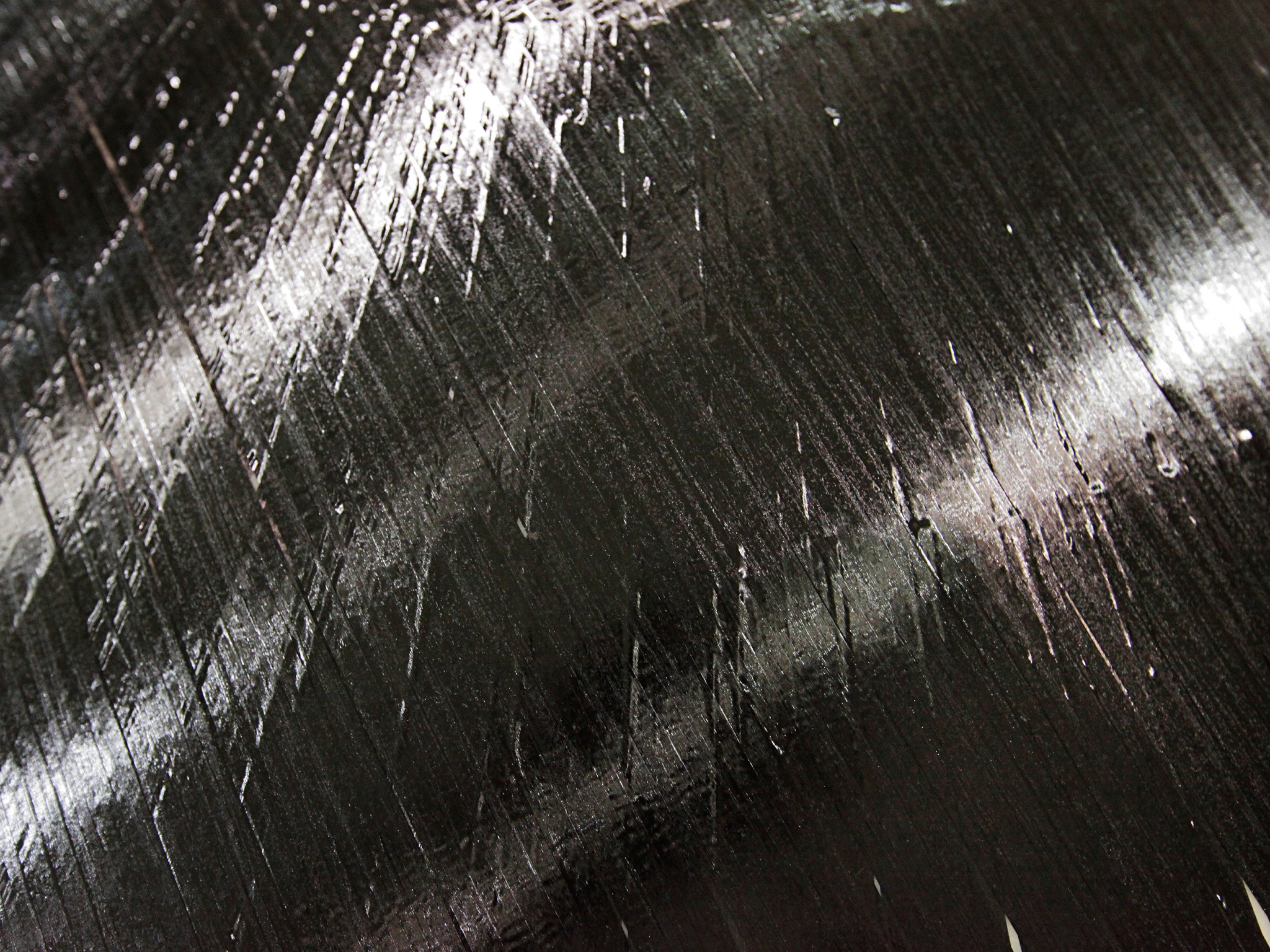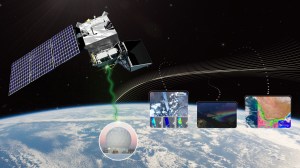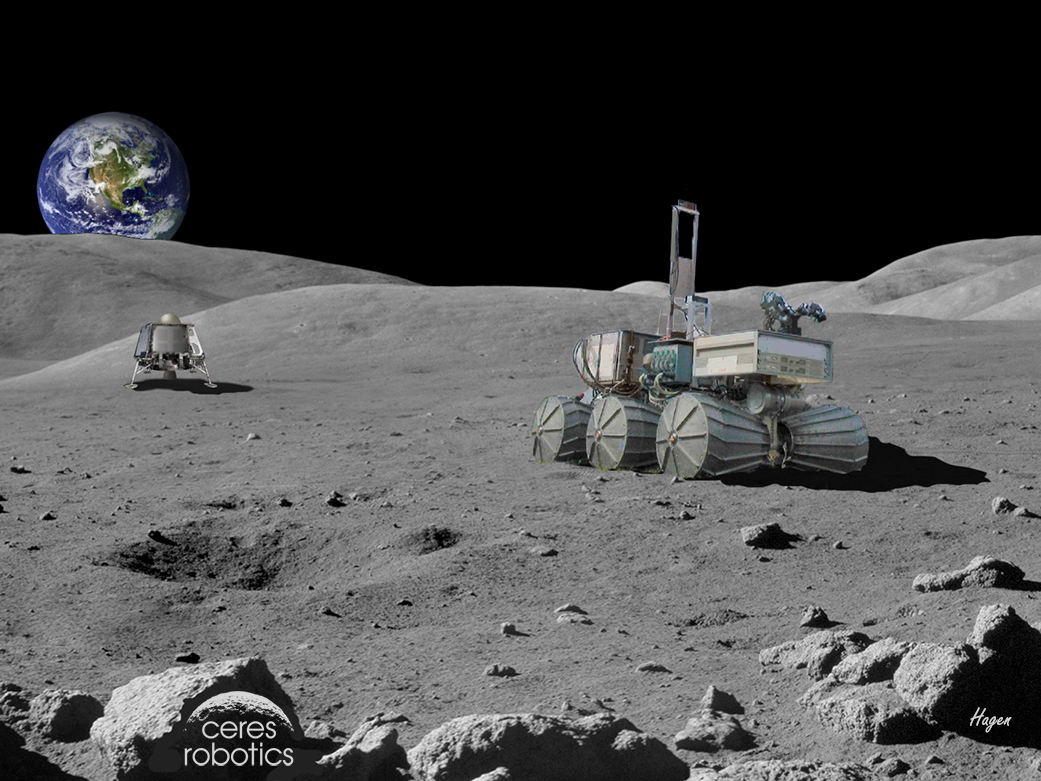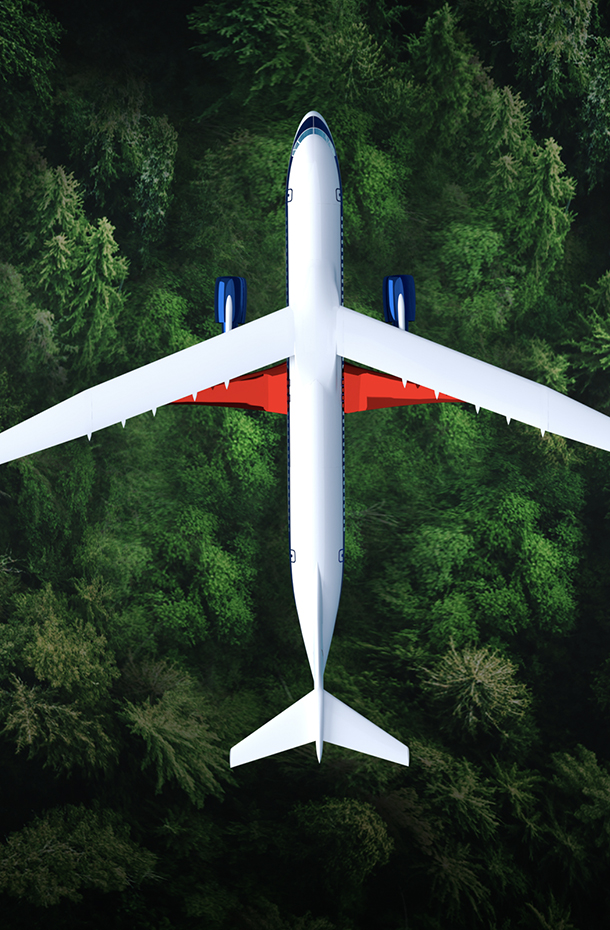Credits: NASA/Gary Banziger
A robot named ISAAC — born with a versatile, spinning head and a robust, acrobatic arm — promises to give NASA’s Langley Research Center a leg up in the quest to develop lighter, stronger composite structures and materials for aerospace vehicles.
One of only three such robots in the world, the multi-million dollar system came to Langley in the autumn and will be ready to spring into action after a Jan. 26 commissioning ceremony.
ISAAC’s arrival has been described as a milestone.
“It changes how we look at composites,” said Brian Stewart, integration manager for the project. ISAAC stands for Integrated Structural Assembly of Advanced Composites. “It shifts the game, shifts the paradigm.”
Stewart, in his Jan. 13 Colloquium talk titled “Taking the Long View: How ISAAC Prepares LaRC for the Future,” explained that ISAAC will help NASA Langley create and test new composite structures faster, more cheaply and with more room for experimentation.
Almost like the Transformers of toy and Hollywood fame, ISAAC can turn on a dime and change functions, making it flexible and adaptable.
We can convert research ideas into real projects pretty quickly. It’s a capability. People see the robot. The robot is neat. Everyone loves a robot. But it’s not a machine, it’s a capability.
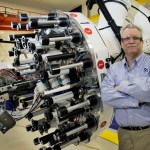
Brian Stewart
Integration Manager for the Integrated Structural Assembly of Advanced Composites Project
“We can convert research ideas into real projects pretty quickly,” Stewart said. “It’s a capability. People see the robot. The robot is neat. Everyone loves a robot. But it’s not a machine, it’s a capability.”
He said Langley, located in Hampton, Virginia, has long maintained a vast array of technical skills and abilities in this area: concept development, analysis and simulation, sophisticated structural analysis. But when it came to building its own structures quickly, Langley was limited. ISAAC changes that.
“This machine is kind of the keystone that helps us bridge all these other capabilities,” Stewart said.
A Versatile Platform
Built by Electroimpact Inc., ISAAC is an adaptation of a KUKA standard industrial robot. One of its key features is a large, rotating, disc-like head. The head is typically loaded with as many as 16 spools of carbon-fiber ribbon. The head isn’t a permanent fixture, however. It can be detached and replaced with identical ones loaded with different tools. As a result, transforming the system to work on a new job can be fast.
“We can use these interchangeable heads for all sorts of amazing things — almost anything we can dream up,” Stewart said.
The idea to bring a composite-building robot to Langley grew from work by Chauncey Wu, a structural mechanics engineer at Langley who studied composites 20 years ago as part of his doctoral dissertation. Wu saw many advantages to tailoring, or steering, carbon fibers in custom patterns to make stronger aircraft or spacecraft bodies.
In recent years, carbon-fiber composite materials have proven their worth in aircraft such as the Boeing 787. Now, researchers want to improve them and expand their uses.
How does it all work?
Manufacturers take carbon fibers smaller than human hairs and combine them with partially cured epoxy resins, to create narrow ribbons. These ribbons are the raw material used in many carbon-fiber composite materials. In ISAAC’s case, the ribbons are loaded onto the robot’s rotating head where they can be fused together in sheets according to precise patterns, directions or arrangements. Those sheets are layered, one on top of the other, and eventually fully cured into one solid, durable mass.
ISAAC gives researchers more flexibility in arranging the ribbons and the fibers they contain. Conventional composites used in existing vehicles consist of many layers of fibers oriented at 0, 45 and 90 degrees. ISAAC can lay them down along a curving path, following a pattern designed to increase strength and performance.
“It’s taking the highly directional nature of the fibers and exploiting them,” Stewart said.
Reporting for Duty
At Langley, the robot’s first assignments will be working for the Aeronautics Research Mission Directorate’s Advanced Composites Project and the Space Technology Mission Directorate’ Composites for Exploration Upper Stage. ISAAC may be also asked to build flight-quality hardware, scaled-down models of aircraft and spacecraft for research purposes, aeroelastically tailored structures for wind tunnel tests — even wind tunnel fan blades and helicopter rotor blades. The team is also looking at how the robot could be used to build metal parts or structures.
In the past, fleshing out a new idea in the field of composite structures could be time consuming and expensive. Today, the speed of knowledge is getting faster. Discoveries are getting cheaper.
Stewart is excited about the possibilities that ISAAC presents. He’s also thrilled with the way NASA Langley personnel worked together to get this technological marvel up and running.
“I’ve been here 23 years and this is one of the most amazing groups I have ever worked with,” Stewart said.





























